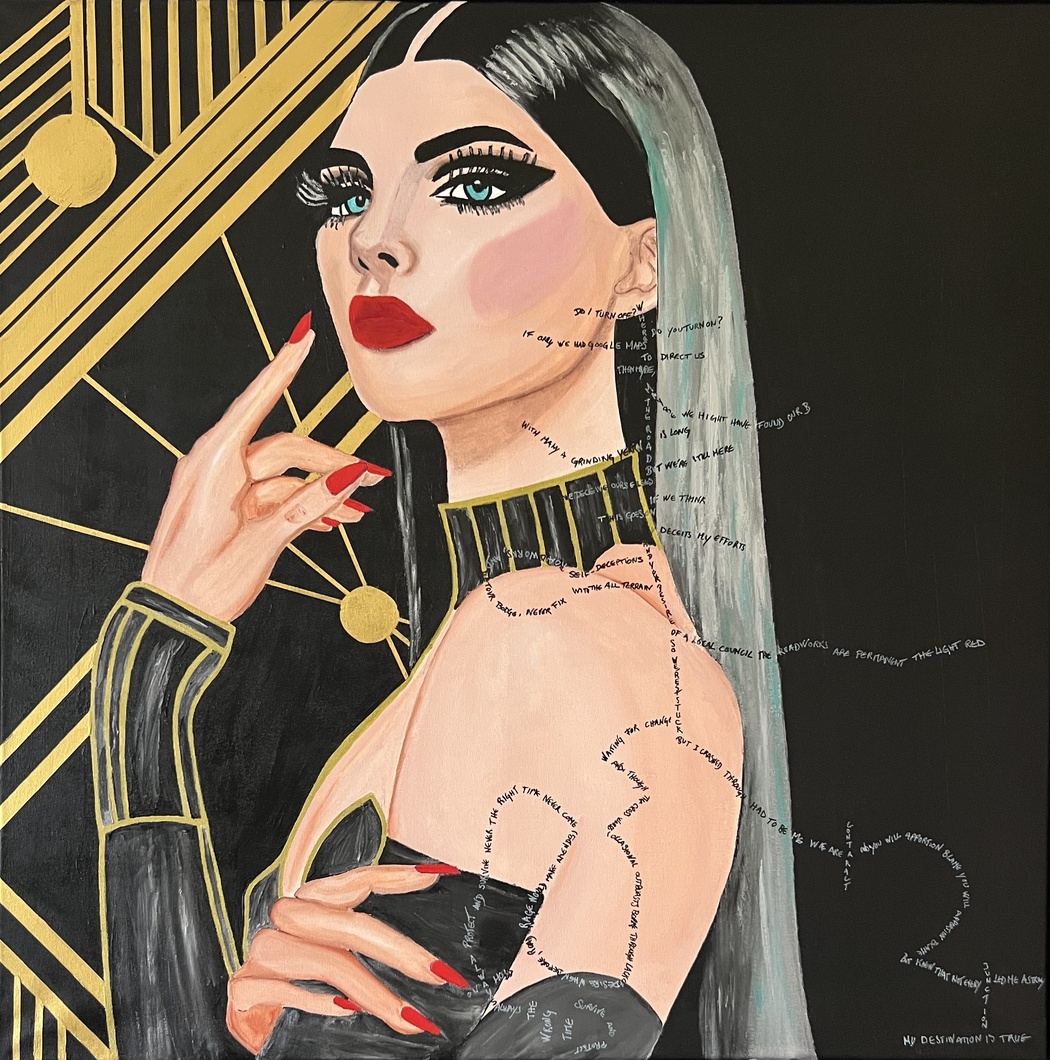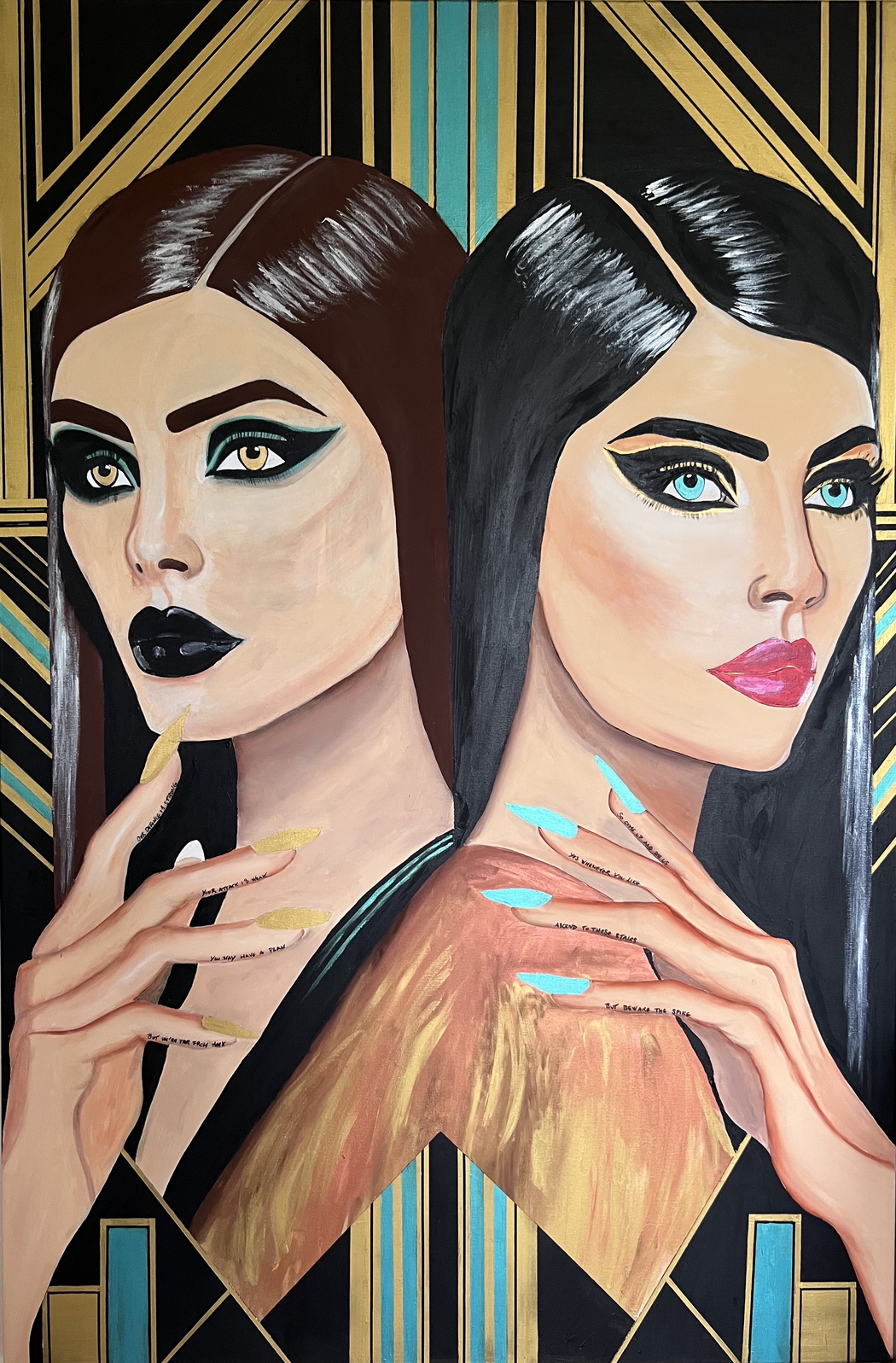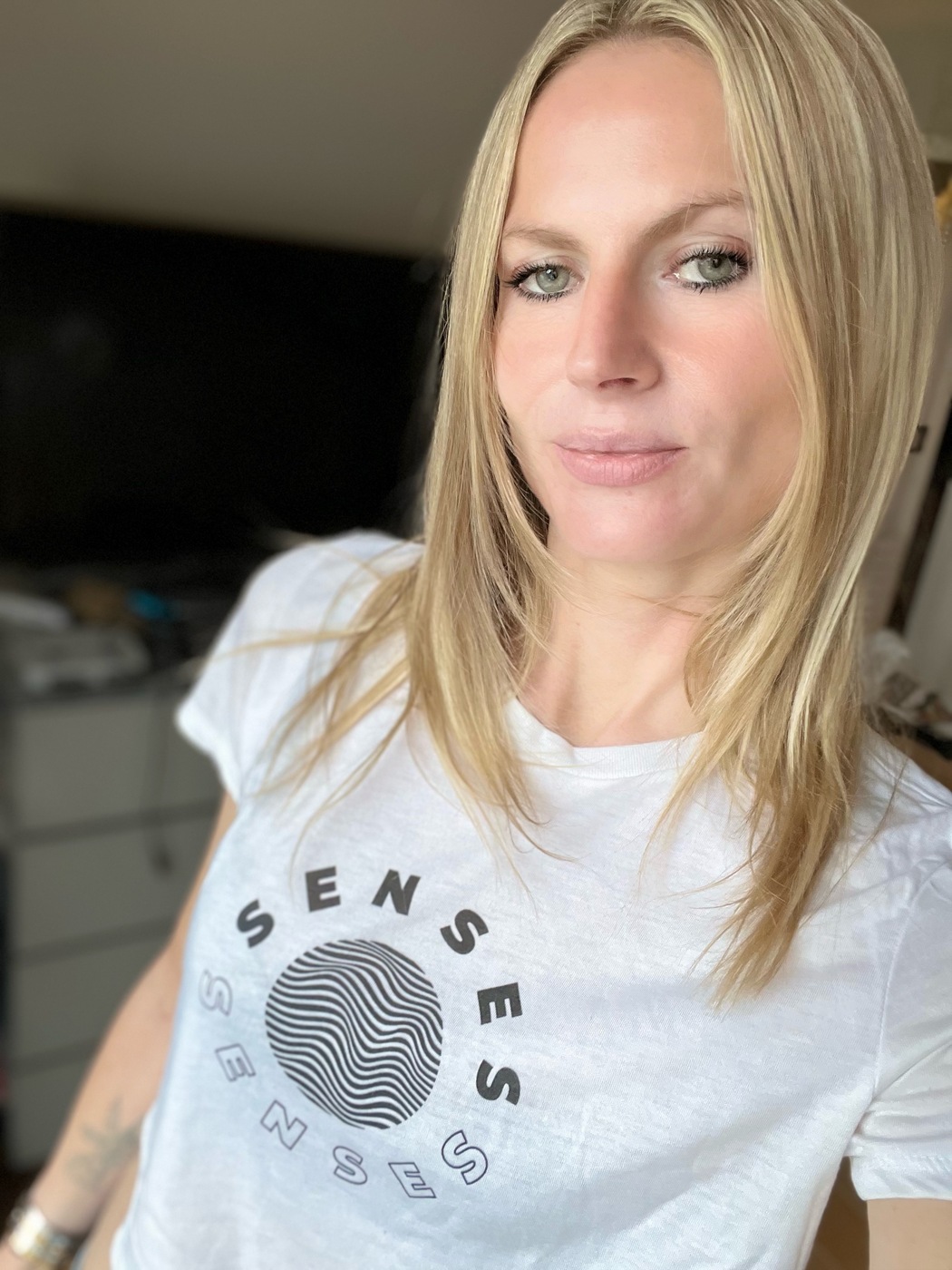Vicky-May Giraud
Your work often features powerful female figures with intense gazes. What do these characters represent for you?
They’re not just characters, they’re confrontations. Each figure is a stand-in for the voices we suppress, the versions of ourselves we hide or silence. The gaze is never passive it’s a mirror, a dare, a disruption. These women are power, rage, tenderness, survival but most of all, presence.
They demand to be seen the way we rarely allow ourselves to be seen.
You describe your process as physical and obsessive. Can you tell us what a typical painting session looks like for you?
It always starts with a sketch, just enough to map out the emotion. But once I hit the canvas, it becomes something else entirely. I paint standing, moving constantly, sometimes with my hands instead of brushes. Its messy, instinctive, and often obsessive. I lose track of time. The sketch is my entry point but what happens next is a collision between body, mood, and medium.

How do you decide which medium to use acrylic, oil, charcoal, or digital for a particular piece?
The medium chooses itself. I dont plan it. If the emotion is sharp and fast, I’ll reach for acrylic. If it’s heavier, slower, I’ll use oil. Charcoal is for rawness. Digital let’s me fragment and recompose. I move between them depending on what the feeling asks for, theres no rule, only urgency.
The text integrated into your paintings adds a poetic and psychological layer. What role does language play in your visual work?
Language is another texture, a wound, a whisper, a punchline. I use text not to explain the image but to add friction. Sometimes it clashes, sometimes it clarifies. I love the tension between what we see and what we read. Words can echo or contradict the gaze. They invite the viewer into the noise behind the silence.

You mentioned being drawn to contradiction, beauty and distortion, strength and vulnerability. How do you translate these tensions into your compositions?
I lean into the clash. I dont try to resolve it. I want the viewer to feel both pulled in and unsettled. I might paint a beautiful face with fractured features. A powerful posture in a collapsing space. Im interested in duality, how two truths can sit in the same body. That’s where I believe real identity lives.
Your figures are often styled in ways that suggest futuristic or mythological aesthetics. Are there specific inspirations behind this visual language?
Yes, but they’re more felt than referenced. I pull from mythology, fashion, symbolism, anything that carries weight and story. Sometimes my figures feel like goddesses or cyborgs or archetypes because I want them to exist outside time. They’re not just portraits, they’re manifestations of emotion, memory, rebellion. A myth I needed to invent because it didnt exist yet.

How does your mixed heritage (FrenchSwedish) influence your perspective as an artist, if at all?
It gives me a sense of in-betweenness, a cultural duality that mirrors the emotional ones I paint.
French intensity meets Swedish stillness. I feel both rooted and displaced, which makes me gravitate toward themes of identity, perception, and what’s beneath the surface. I think being mixed let’s me slip between languages visually and emotionally without needing permission.


Leave a Reply